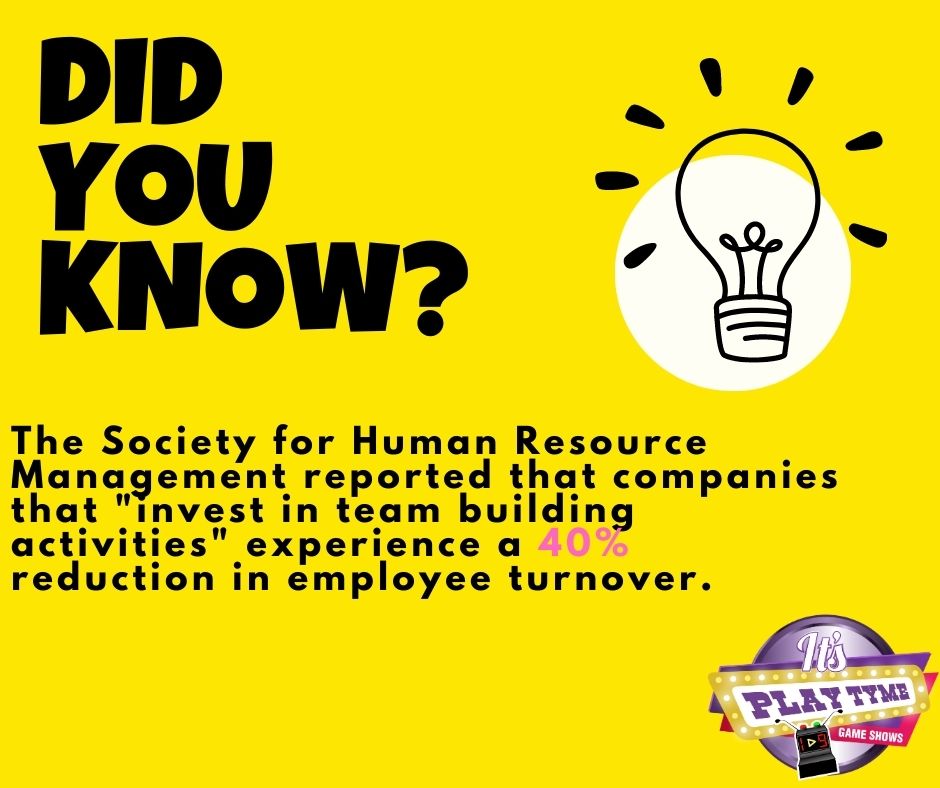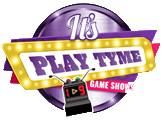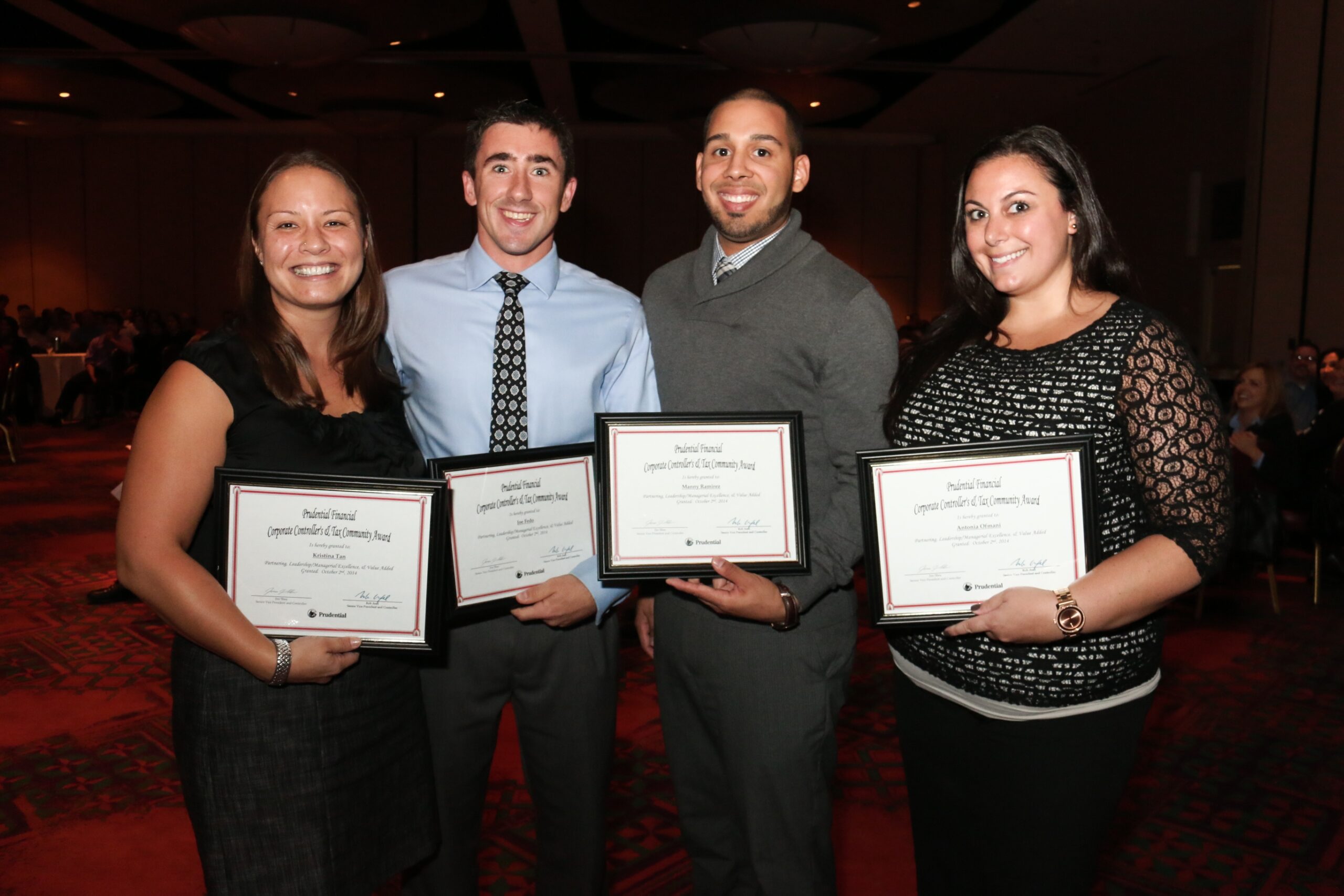“Strategies for Employee Recognition in Today’s Workforce:
With the evolving landscape of the modern workforce, it’s crucial to adapt the ways we recognize and reward employees.
Gone are the days of traditional employee awards programs; now, a more robust and dynamic approach is needed to meet the diverse needs of today’s professionals.
This article delves into innovative recognition strategies, guiding companies on how to stay ahead in rewarding their employees and nurturing a culture of appreciation.”

Innovative Strategies for Employee Recognition | Awards Redefined
Key Takeaways
- Understanding the importance of employee incentives in boosting morale, engagement, and productivity
- Examining the evolution of employee recognition programs and their impact on company culture and employee satisfaction
- Exploring the design and integration of employee incentive programs that resonate with the contemporary workforce
- Going beyond traditional benefits to create employee incentives that foster morale and loyalty
- Discovering novel employee appreciation tactics that demonstrate genuine value and impact on workplace satisfaction
- Linking employee satisfaction with improved company performance and revenue
The Evolution of Employee Recognition Programs
Workplace recognition has come a long way from the days of simple ‘Employee of the Month‘ programs.
With the constant evolution of recognition practices, it is crucial to examine how far these initiatives have advanced and the role they play in shaping company culture and employee satisfaction.
Through the course of this analysis, readers will gain insight into the factors that drove these changes and how contemporary recognition schemes cater to a more diverse and dynamic workforce.
The transformation of workplace recognition can be traced back to various shifts within the workforce: new generations entering the labor market, the rise of remote and flexible work arrangements, and an increased focus on employee engagement and satisfaction.
As perceptions and expectations in the workplace evolved, so have recognition programs to accommodate the prevailing needs and attitudes of employees.
In the past, recognition was often limited to traditional hierarchical rewards, where managers would bestow certificates or plaques to high-performing employees in formal settings.
Today, companies have understood the importance of fostering a more inclusive and progressive environment, where recognition is tailored to suit individuals’ preferences and the company’s core values.
Some of the pivotal changes witnessed in the evolution of workplace recognition include:
- A shift from hierarchical systems to peer-to-peer recognition that encourages colleagues to appreciate and support each other.
- The introduction of digital platforms and apps that facilitate timely recognition and offer personalized rewards.
- Greater emphasis on non-monetary rewards such as flexible scheduling, professional development opportunities, and wellness programs.
- An increased focus on positive attitude management that supports employees’ mental and emotional well-being in the workplace.
These changes have inevitably led to a more engaging and empowering employee experience, directly impacting job satisfaction and fostering a healthier company culture.
| Era | Recognition Practices | Workforce Priorities |
|---|---|---|
| Pre-2000s | Traditional ‘Employee of the Month’ awards, occasional bonuses, and public acknowledgment from managers. | Job security, monetary rewards, and hierarchical advancement. |
| 2000s | Introduction of peer-to-peer recognition, employee reward programs, and non-monetary incentives. | Team collaboration, growth opportunities, work-life balance, and flexibility. |
| 2010s-Present | Digital platforms, instant recognition, personalized rewards, and a strong emphasis on well-being and inclusivity. | Meaningful work, professional development, thriving company culture, and emotional well-being. |
The evolution of recognition has led to the development of programs that deeply impact employee satisfaction and overall workplace quality.
By understanding these changes, organizations can tailor modern recognition efforts to meet the diverse needs of their workforce, leading to thriving and engaged company cultures.
1. Integrating Employee Incentive Programs into Modern Workplaces
In today’s ever-changing work landscape, fostering a powerful and engaged workforce is paramount for sustained success.
As such, integrated employee incentive programs that harmoniously blend into the modern workplace culture play a crucial role in fueling motivation and productivity.

Designing Incentive Programs That Resonate With Today’s Workforce
Given the evolving dynamics and expectations of modern workers, it’s essential to design incentive programs that resonate with these employees.
By carefully assessing the underlying desires and aspirations that drive them, we can create tailor-made, result-focused strategies. Some key factors to consider include:
- Acknowledging and celebrating achievements in ways that foster personal and professional growth.
- Creating flexible rewards, which cater to diverse lifestyles, interests, and career paths.
- Ensuring recognition programs are transparent and easily accessible.
- Regularly updating these programs to maintain relevance and employee engagement.
Effective incentive programs resonate with the modern workforce by addressing their individual needs and aspirations, ultimately driving engagement and success.
Balancing Personalization and Scalability in Incentives
Personalization is an integral part of modern incentive programs, as it takes into account individual preferences and desires.
However, finding the right balance between personalization and the scalability of employee programs is crucial in realizing the full potential of these initiatives. Let’s explore some strategies that help achieve this delicate equilibrium:
- Identify common ground: Unearth the shared values and goals that bind your team, while still allowing for customization within those parameters.
- Maximize flexibility: Offer a broad array of reward options to accommodate diverse employee interests while maintaining a unified program structure.
- Delegate responsibility: Empower managers and team leaders to drive the customization process by providing them with the necessary tools and guidelines, thus alleviating the burden on your HR team.
- Automate processes: Leverage technology to simplify the implementation and management of personalized incentive programs without sacrificing scalability.
By striking the perfect balance between personal customization and program scalability, implementing effective employee engagement strategies that drive desired outcomes can be a reality within even the most diverse modern work environments.
| Personalization | Scalability |
|---|---|
| Individualized rewards | Wide-ranging reward options |
| Empathy-driven recognition | Unified program structure |
| Flexible implementation | Automated management systems |
2. Boosting Morale with Creative Employee Benefits
Providing employees with an extensive range of creative benefits can significantly contribute to an employee morale boost.
These inventive solutions go beyond traditional health and retirement plans, allowing businesses to tap into employee happiness and morale.
Let’s dive into some of the unique benefits strategies that help create a thriving workplace environment focused on workplace wellness.

One key element of a creative employee benefits program is the implementation of wellness initiatives.
Workplace wellness programs can encourage healthy lifestyles for employees and positively impact their mental and physical wellbeing. Consider incorporating the following ideas:
- Onsite fitness classes or gym memberships
- Nutritional coaching and healthy meal options
- Mental health resources and stress reduction programs
- Employee assistance programs for personal and professional issues
Flexible scheduling is another increasingly popular unique benefits strategy.
These policies allow employees to find a better work-life balance and adjust their schedules to accommodate personal commitments or preferences. This can include:
- Telecommuting options and remote work opportunities
- Flexible hours, such as a compressed workweek or flextime
- Generous paid time off and sabbatical policies
Providing employees with fringe benefits tailored to their specific needs can further enhance workplace satisfaction. Some examples of these perks include:
- Pet-friendly office policies or pet insurance
- Paid parental leave and on-site childcare
- Student loan repayment assistance
- Professional development opportunities and continued education
“The way I see it, taking care of your employees is a surefire way to boost morale, increase productivity, and ultimately, improve your bottom line.”
It is essential for employers to remain innovative and adaptive in their approach to employee benefits, as doing so will undoubtedly lead to a happier and healthier workforce.
Keep an open line of communication with your team members and always be receptive to their ideas and feedback.
Incorporating creative and unique benefits strategies into your employee care plan is a key step in elevating workplace wellness and enhancing overall employee satisfaction.
3. Embracing Employee Loyalty Programs for Long-term Engagement
In today’s competitive business environment, companies are continuously searching for ways to retain their top talent and foster long-term employee engagement.
Employee loyalty programs have emerged as an effective retention strategy, solidifying the bond between the organization and its team members.
A well-designed employee loyalty program can help create a connected company culture where employees feel valued and appreciated.
Such programs typically incorporate various elements that drive long-term engagement such as rewards, recognition, employee team-building activities, and opportunities for career growth.

Some of the key benefits of implementing employee loyalty programs include:
- Reduced employee turnover rates
- Increased employee motivation and job satisfaction
- Promotion of a positive company culture centered around collaboration, respect, and shared values
- Strengthening of company loyalty among team members
- Greater sustainability in company culture
How Loyalty Programs Foster a Connected Company Culture
A connected company culture is one that encourages collaboration, mutual respect, and a shared sense of purpose among team members.
Employee loyalty programs can play a crucial role in fostering such a culture by providing tangible incentives for employees to remain engaged and committed to the company’s objectives over the long term.
“Loyalty programs are not just about rewards and recognition; they should also promote a sense of belonging and help employees feel connected to the company, their colleagues, and the work they do.”
Here are some effective strategies to embrace when designing an employee loyalty program that fosters a connected company culture:
- Design a rewards system that aligns with the company’s values and encourages behaviors that promote a positive work environment.
- Integrate opportunities for employee team-building and group activities that encourage collaboration and strengthen interpersonal relationships.
- Promote regular feedback, communication, and recognition to keep employees connected and informed.
- Encourage continuous learning and career growth through training, mentorship, and development programs.
By adopting these strategies, organizations can design and implement employee loyalty programs that drive long-term engagement, create a connected company culture, and foster company loyalty.
In turn, this will contribute to a more productive, motivated, and committed workforce, driving success for both the employees and the organization.
4. Keys to a Successful Employee Motivation Program
Developing a successful employee motivation program relies on understanding both the intrinsic employee drivers and the most effective motivational strategies.
This section will break down the fundamental elements of building a motivation program that encourages peak performance and boosts job satisfaction.

One of the essential keys to motivation is recognizing the diverse factors that drive an individual or a team to perform at their best.
By understanding and addressing these individual drivers, organizations can design motivational programs tailored to resonate with every employee, regardless of their role or preferences. Here are a few essential factors to consider:
- Psychological factors such as autonomy, mastery, and purpose
- Flexible work policies to accommodate varying employee needs and schedules
- Communication and feedback, including regular one-on-one meetings and performance reviews
- Clear goals and expectations, providing employees with direction and focus
When designing an employee motivation program, it’s crucial to integrate these personalized factors with broader motivational strategies. Here are some examples:
- Establishing a formal recognition program to highlight essential milestones and achievements
- Offering a diverse range of incentives, such as promotions, bonuses, or unique experiences
- Creating a positive work environment that encourages collaboration and camaraderie
- Providing opportunities for continuous learning and development
Diving deeper into our understanding of what drives and motivates people, it’s essential to explore the intrinsic employee drivers.
According to renowned psychologist Daniel Pink, these drivers can determine the difference between feeling satisfied and fulfilled, or disenfranchised and discouraged.
Pink proposed that the three primary intrinsic drivers are autonomy, mastery, and purpose:
Autonomy: the desire to have ownership over one’s work, time, tasks, and decision-making processes.
Mastery: the passion for continuously improving and becoming better at one’s craft or skillset.
Purpose: an individual’s understanding of their work’s impact and its role in contributing to a collective vision or goal.
Addressing these intrinsic drivers will not only enhance employee motivation and satisfaction but also contribute to the overall success of the program.
To successfully address intrinsic drivers in your program, consider these approaches:
| Driver | Strategy |
|---|---|
| Autonomy | Offer options for flexible working hours, remote work, and allow employee input in decision-making processes. |
| Mastery | Provide relevant training and development opportunities, such as workshops, courses, or mentorship programs. |
| Purpose | Establish a clear organizational mission and vision, ensuring all employees understand their contributions to the bigger picture. |
In summary, creating a successful employee motivation program means understanding the core keys to motivation, addressing intrinsic employee drivers, and deploying appropriate motivational strategies.
By integrating these elements, organizations can positively impact overall employee morale, engagement, and performance, ultimately contributing to business success.
5. Employee Appreciation Tactics That Go Beyond the Basics
In today’s competitive business environment, companies must go beyond basic appreciation to create a workplace where employees feel genuinely valued.
Advanced recognition strategies that incorporate positive reinforcement methods can dramatically improve overall workplace satisfaction and productivity.
Let’s dive deeper into some creative recognition tactics and unique appreciation ideas that make a significant impact on employee motivation and love for the workplace.

Spotlight on Unique Appreciation Ideas That Employees Love
Innovative and relevant appreciation strategies help create a stronger bond between employees and the company. Here are some real-world examples of appreciation innovation that go beyond basic appreciation and resonate strongly with employees:
- Customized and personalized rewards: Tailor the employee rewards to match individual interests and preferences. Personalized rewards can include specialized training an employee wishes to attend,
a subscription to their favorite magazine, or even a gift card for their preferred coffee shop. - Experiential rewards: Offer experiences as rewards instead of material items. For example, gift concert tickets, a cooking class, or a weekend getaway at a beautiful resort.
- Flexibility and autonomy: Encourage work-life balance by offering flexible work hours and allowing employees to choose their preferred work location or working hours.
- Public praise and recognition: Give employees the spotlight in front of their peers and management. This can be done during team meetings, company newsletters, or on company-wide recognition platforms.
- Peer-to-peer recognition: Encourage a positive reinforcement culture by incorporating a peer-to-peer recognition program where employees can appreciate and acknowledge their colleagues’ efforts and contributions.
| Appreciation Tactic | Example |
|---|---|
| Customized Rewards | A subscription to a favorite magazine |
| Experiential Rewards | Cooking class |
| Flexibility & Autonomy | Remote work opportunities |
| Public Praise | Company newsletters |
| Peer-to-Peer Recognition | Recognition platform for colleagues |
Implementing these appreciation tactics can create a highly motivated and engaged workforce by reinforcing positive behaviors and outcomes.
By continuing to experiment with new and creative recognition tactics, companies can make a meaningful impact on employee satisfaction, loyalty, and workplace culture.
6. Improving Employee Retention Through Recognition

Reduction in Employee Turnover
One of the most effective ways to retain top talent in an organization is by implementing a robust recognition program.
Employee retention strategies are vital in today’s competitive job market, as they can significantly reduce employee turnover and improve overall workforce satisfaction.
In this section, we will explore various methods that can help improve employee retention through targeted recognition initiatives.
- Regularly recognize and reward employees for their hard work and dedication. Employees want to feel valued and appreciated for their efforts.
By offering timely and meaningful recognition, companies can ensure that their workforce feels motivated and engaged, ultimately reducing the likelihood of turnover. - Develop clear career growth opportunities. Employees often seek new opportunities and challenges for their professional growth.
By providing clear guidelines for career progression, organizations can demonstrate their commitment to employee development, in turn creating a more fulfilling work environment that encourages long-term commitment. - Encourage open communication and feedback. A transparent and open company culture fosters trust and loyalty among employees.
Providing channels for employees to voice their concerns, suggestions, and achievements allows them to feel heard and respected, promoting greater employee retention. - Foster a culture of inclusivity and diversity. Creating an inclusive and diverse work environment allows organizations to leverage the strengths of a diverse workforce.
This can lead to higher levels of employee satisfaction and loyalty. - Invest in employee training and development.
Providing comprehensive training programs allows employees to sharpen their skills and expand their knowledge, which not only benefits the organization but also demonstrates the company’s commitment to their personal and professional growth.
“Employees who believe that management is concerned about them as a whole person – not just an employee – are more productive, more satisfied, more fulfilled.
Satisfied employees mean satisfied customers, which leads to profitability.” – Anne M. Mulcahy
It’s crucial to understand the correlation between recognition and retention in the modern workforce. To bring this concept into focus, let’s take a look at the following table that showcases the impact of various employee retention strategies on turnover rates:
| Retention Strategy | Employee Turnover Rate Reduction |
|---|---|
| Regular recognition and rewards | 24% |
| Clear career growth opportunities | 18% |
| Open communication and feedback | 15% |
| Inclusivity and diversity | 22% |
| Employee training and development | 20% |
In conclusion, recognition plays a significant role in enhancing employee satisfaction and retention.
By implementing strategic employee retention strategies centered on recognition, companies can experience a substantial decrease in turnover rates while fostering a more engaged and committed workforce.
As a result, organizations stand to benefit from improved productivity, better team morale, and, ultimately, a healthier bottom line.
7. Measuring the Impact of Employee Awards
Understanding the effectiveness of your recognition programs is critical to continuously improving them and ensuring their continued relevance.
In this section, I’ll outline various approaches and metrics that can be used to measure the impact of employee awards on company performance.
This also provides insight into their tangible influence on productivity, profitability, and employee loyalty.
One common method of measuring recognition impact is to analyze company-wide data related to employee engagement and retention.
This can be done by tracking and correlating the prevalence of employee awards with key performance indicators (KPIs) such as:
- Employee satisfaction
- Employee retention rates
- Productivity
- Profitability
Regularly assessing the effectiveness of your recognition program will help you identify areas of improvement and any necessary adjustments.
It can also provide you with the information you need to continually refine your program, ensuring it remains aligned with your company’s evolving needs and objectives.
Linking Employee Satisfaction With Customer Satisfaction and Revenue
An essential aspect of measuring the impact of employee awards on company performance is understanding the chain of effects they create within the organization.
Employee satisfaction, which is significantly influenced by recognition and awards, plays a critical role in driving customer satisfaction and revenue growth.
Happy employees are more likely to deliver exceptional customer service and demonstrate higher levels of engagement and commitment to their roles.
In turn, satisfied customers are more likely to convert into repeat buyers and recommend your business to others, driving increased revenue.
An analysis of recognition programs can shed light on how strong employee satisfaction linkage leads to improved customer satisfaction and business performance.
To establish this connection, it’s helpful to use satisfaction metrics to identify relationships among:
- Employee satisfaction scores
- Customer satisfaction ratings
- Revenue growth rates
By effectively measuring and analyzing these connections, you can build a strong case for investing in robust employee recognition programs.
Also demonstrate their tangible impact on company performance, employee satisfaction, and overall business success.
Conclusion
As we reach the culmination of recognition strategies presented in this article, it is evident that employee recognition plays a significant role in shaping company culture, improving employee satisfaction, and boosting overall performance.
From the evolution of employee recognition programs to the creative approaches integrating employee incentives in modern workplaces, it is clear that an effective employee recognition strategy is crucial to the success of your organization.
When it comes to reinforcing company values through awards, we’ve explored the impact that innovative benefits, loyalty programs, and appreciation tactics have on employee morale and retention.
By fostering a connected company culture, your organization can thrive as employees feel valued, engaged, and motivated to contribute their best efforts.
In our final thoughts on employee recognition, let it be a reminder to continuously evaluate and innovate your recognition practices to meet the changing needs of the modern workforce.
By keeping employee satisfaction at the heart of your efforts, your organization will ultimately benefit from increased loyalty, productivity, and overall success.
With insights and strategies shared in this article, it’s time to elevate your employee recognition program to new heights.
Frequently Asked Questions

frequently asked questions
Q1. What are the key elements of a successful employee motivation program?
Successful employee motivation programs focus on understanding psychological drivers of motivation, catering to individual needs, and providing meaningful incentives.
These programs can encourage peak performance and satisfaction on the job by keeping employees engaged and motivated.
Q2. How has the evolution of employee recognition influenced modern recognition programs?
The evolution of employee recognition has led to a more comprehensive approach that goes beyond basic awards programs, resulting in strategies that cater to more diverse and dynamic workforces.
By considering changes in workplace expectations, contemporary recognition programs can effectively impact employee satisfaction, engagement, and company culture.
Q3. What role do loyalty programs play in fostering a connected company culture?
Loyalty programs can create a shared sense of purpose, encourage collaboration, and foster mutual respect between team members.
By promoting long-term engagement and retention, these programs contribute to a more connected, supportive, and productive company culture.
Q4. How can creative employee benefits boost morale at the workplace?
Creative employee benefits, such as wellness programs, flexible scheduling, and unique fringe benefits, can contribute to overall employee happiness and morale.
These innovative benefits show employees that their company cares about their well-being and work-life balance, leading to increased job satisfaction and commitment.
Q5. How do effective employee appreciation tactics go beyond the basics?
Employee appreciation tactics that go beyond the basics involve:
- Iimplementing unique recognition strategies
- Creative rewards
- Meaningful gestures that genuinely make employees feel valued.
By focusing on reinforcing positive behaviors and outcomes, these advanced appreciation tactics can improve workplace satisfaction and productivity.
Q6. What strategies for employee recognition can be used to improve retention?
Strategies for improving employee retention through recognition include:
- Regular, meaningful recognition
- Developing comprehensive reward programs
- Providing continuous employee development
- Actively engaging employees in decision-making processes.
By acknowledging and rewarding contributions, employers can retain top talent and promote a positive workplace environment.
Q7. How can the impact of employee awards on company performance be measured?
To measure the impact of employee awards on company performance, organizations can track metrics such as employee engagement, productivity, profitability, and employee loyalty.
These measurements can help determine the effectiveness of recognition programs and their influence on overall business outcomes.
Q8. How are employee satisfaction, customer satisfaction, and revenue linked?
Employee satisfaction, heavily influenced by recognition and awards, directly impacts customer satisfaction and overall revenue.
When employees feel valued and appreciated, they are more likely to be motivated and committed to their work.
This leads to better customer experiences, increased sales, and higher overall revenue for the business.
Got Team Building Games ?
![]()
Book a live game show experience today!
Contact us for further details.
For Immediate assistance by text – 917-670-4689
No deposit required.
We plan and facilitate all activities.





